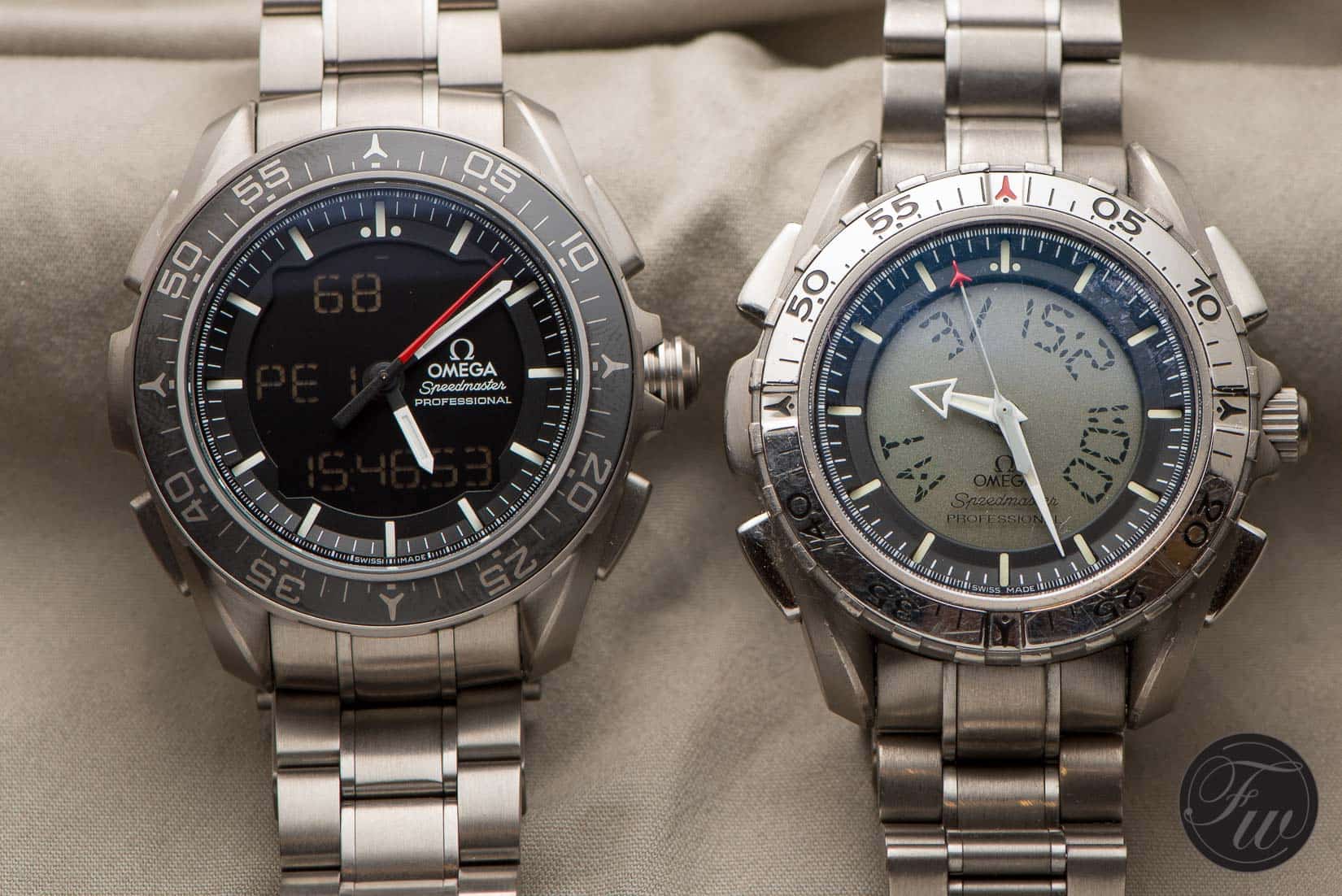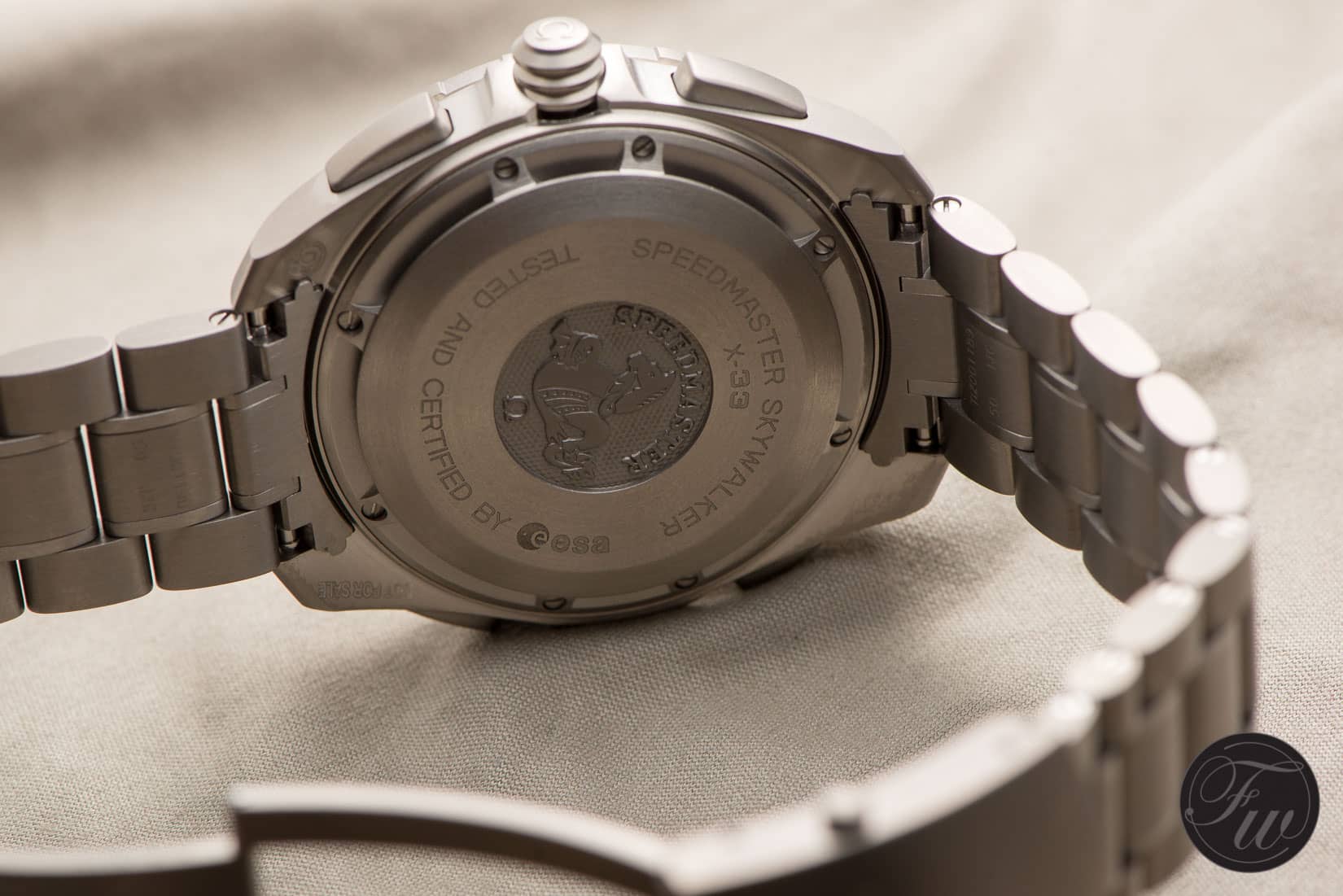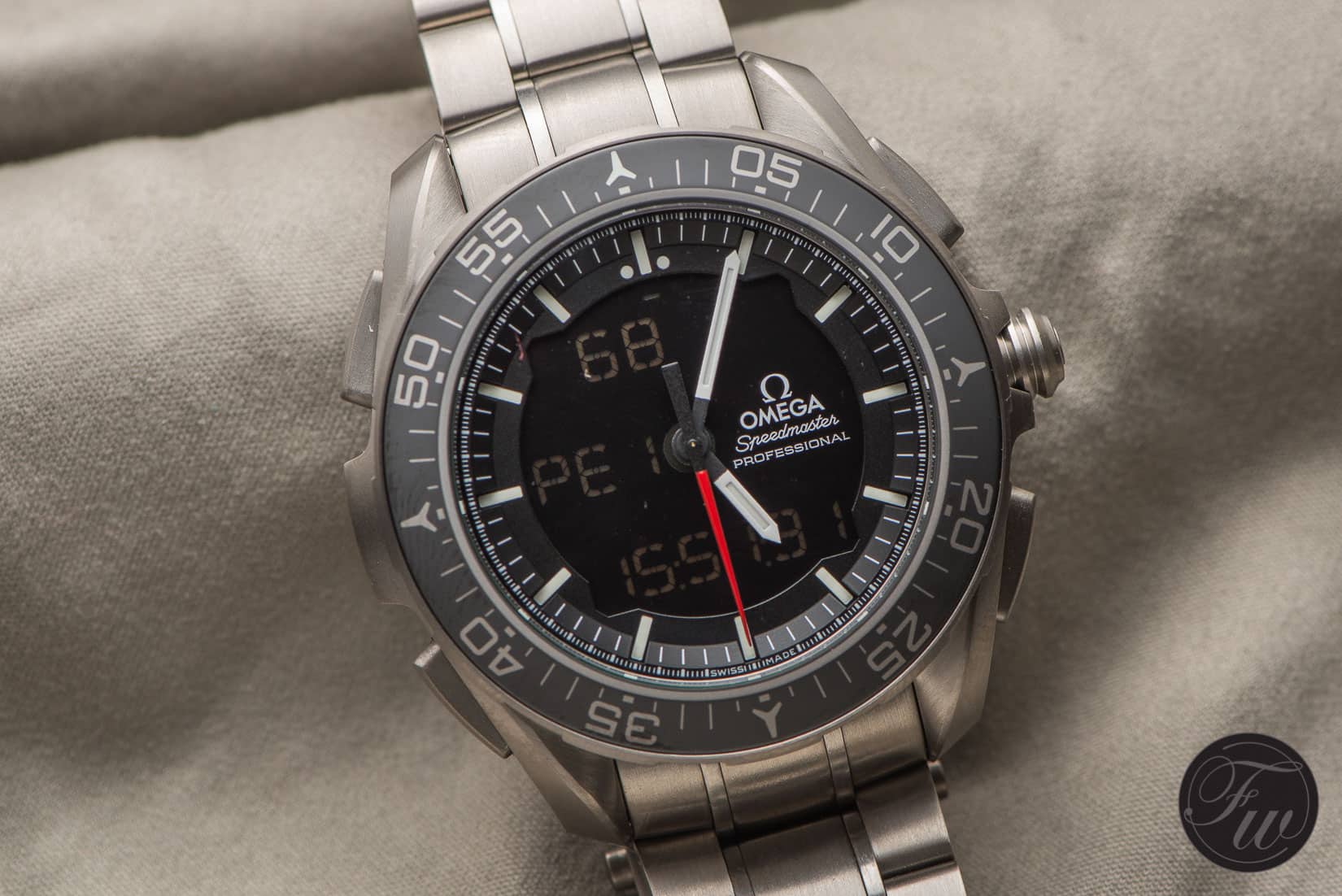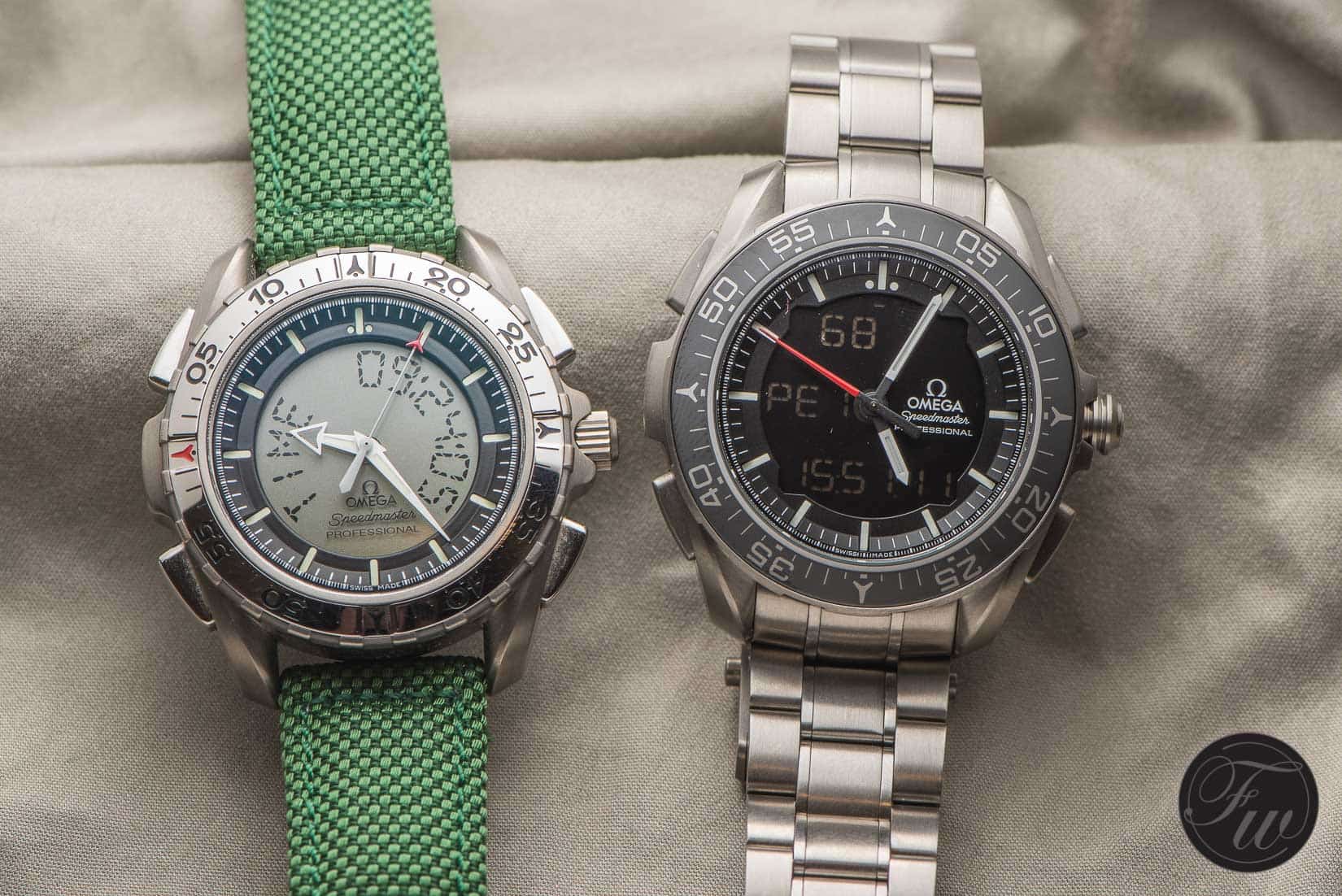Speedy Tuesday — Speedmaster X-33 Skywalker “Gen 3”
Some people are wondering why the SpaceX crew isn’t wearing the Omega Speedmaster X-33 Skywalker. It’s a fair question. Not only is the X-33 Skywalker the latest digital Omega Speedmaster, but it was also designed with exactly this kind of mission in mind. So what gives?
It all comes down to the launch site’s location. Had this flight been launched from Russian soil, Roscomos would have provided the crew with an Omega Speedmaster X-33 Skywalker and a Speedmaster Professional Moonwatch. The same courtesy is afforded everyone launching from Russia. Astronauts from NASA or ESA and Cosmonauts from Roscosmos itself would all receive the same treatment. But NASA prefers the tried and tested Speedmaster X-33 Gen 2. And that’s a pretty awesome watch in its own right. As you might know, five Fratello team members own one. Interestingly, though, there are quite a few differences between the Gen 2 and 3 watches. Let’s dig into those here.
…an interesting tool for those who work in space exploration.
The current Speedmaster Professional X-33 Skywalker distinguishes itself from its predecessors by two useful functions for space exploration: mission elapsed time (MET) and phase elapsed time (PET). It also has an extra time zone compared to the first two generations. PET is based on a patented design by ESA astronaut Jean-François Clervoy. It addresses a true astronaut’s timing needs. That makes the watch an interesting tool for those who work in space exploration.
Speedmaster X-33 Skywalker
The Speedmaster Professional X-33 Skywalker (reference 318.90.45.79.01.001) has a large titanium case in the same interesting design as the former Speedmaster X-33 models. The case diameter is 45mm and the case and bracelet have been crafted out of grade-2 titanium, like the older models. Grade-2 titanium tends to become darker over time. This results in an interesting, edgy appearance. Consequently, it takes on an even more futuristic character because of it. The bezel of this watch has a ceramic ring with a chromium-nitride scale, coated with white Super-LumiNova.
“Tested and qualified by ESA”
The bracelet is a combination of grade-2 and grade-5 titanium. The grade 5 titanium has a high polished finish. On the case back, we can see the engraving “Tested and qualified by ESA”. The case of the 1st generation 3290.50 had only the Seahorse logo, 2nd generation 3291.50 had “Flight-qualified by NASA for Space missions”. That’s the same inscription you’d expect to find on members of the normal Speedmaster Professional 3570.50 family.
New Face For The X-33 Skywalker
The most striking change in the 3rd generation is a completely new look. A more “cut-out” dial in black that exactly fits the horizontal digital printing and information lines. The X-33 Skywalker provides a complete set of functions. Here we have hours, minutes, and seconds for up to three different time zones. Additionally, there are three alarms with different sounds. Chronograph and countdown functions feature also, and a perpetual calendar with day, date, month, year, and week number indications rounds out the package.
…the backlight glows for 5 seconds.
The digital information is displayed brightly and can be illuminated for nighttime reading. Once activated, the backlight glows for 5 seconds. That’s maybe not long enough for all possible nighttime tasks. As such, it might have been better to have a separate pusher for turning the light “on” and “off”. Of course, that would have to balance out with battery consumption concerns, but given that this is a serious tool, at least the option of presetting the backlight for a longer duration might be a nice upgrade.
What Does PET Mean?
The most important difference between generation 2 and 3 is a function called PET — phased elapsed time. PET combines the traditional function of the timer and alarms and makes it much easier to set them (without troublesome calculations) for different time scales. PET enables automatic initiation of timer (countdown function) and chronograph (elapsed time function). Without PET, all timers and chronographs have to be manually activated. That is a problem if you want a countdown to end at a specified future point in time.
The pilot of a spaceship who has to deal with a series of minutely timed and controlled events.
PET also has an alarm with a built-in countdown function with elapsed time going forward. The benefit of PET may be unclear for the commuting civilian or even a frequent flyer. But this watch is designed with real-life astronauts in mind. The pilot of a spaceship who has to deal with a series of minutely timed and controlled events. orbital corrections, interplanetary insertions, or vehicle rendezvous — timing is of the essence. PET can set an accurate time or date for such events, counting down the remaining time to, or recording the elapsed time from that point.
PET Meets MET
Another use of PET is combining it with Mission Elapsed Time (MET) to calculate the setting of an alarm. This eliminates the stress associated with making the necessary calculations when under pressure. Take this example: You want to set an alarm for a future point in time. You know the countdown to that point needs to begin at, let’s say, 09:29, and you know how long the countdown needs to run for (let’s say 1 day, 5 hours, and 17 minutes). So all you need to do is choose the start point on the MET and enter the duration of the countdown and then the PET function will set the alarm for you.
Down to Earth
Most Speedmaster X-33 owners will never make it into space. Consequently, this spaceman’s instrument, with its PET and MET may seem useless to the common man. But that’s not really the point. These watches can be very useful tools here on Earth. Many of us have busy lives. We dash through jam-packed schedules daily. A little help would not go amiss. And any X-33 is a great choice! They are easy to wear, easy to use, and have rafts of functionality should you wish to experiment with it.
Speedmaster Professional X-33 — A Brief History
The first Speedmaster Professional X-33 (reference 3290.50) was launched on March 25, 1998 at the Houston Space Centre as “Marswatch”. It was certainly a massive departure from the traditional Moonwatch. It had a titanium case and also provided analog as well as digital information (local time, perpetual calendar, programmable alarm, mission timer, mission alarm, universal time (GMT), universal alarm, countdown timer with alarm and a chronograph). At the time, the X-33 was embedded in military storytelling. It had been developed and tested with ESA and NASA astronauts and elite fighter pilots from the Blue Angels and Thunderbirds. Early prototypes from about 1995 had titanium Seamaster Professional 300M Chronograph cases with four pushers and large digital displays. Some of the early prototype dials showed the name “Flightmaster”.
Gloves
The Omega X-33 had to be operable with gloves. Therefore, the crown had to become a pusher, instead of a turner. Pushing it allowed browsing through several functions, which could be operated with the other buttons. One of the most remarkable novelties was the very loud alarm (80 dB!). The alarm had to be that loud so it could be heard in noisy environments. Additionally, the X-33 also had an interesting low-battery indicator. “Dancing hands” indicated an almost empty battery.
The commercial watch had a red or black Kevlar strap. During the 2000s, Omega released a modified version (3291.50) with a brushed finished bezel (with Luminova dot), satin-finished pushers instead of shiny ones, and a new crown design. A titanium bracelet was available and the case back had the “Qualified by NASA …” inscription.
Note that the X-33 was not the first digital-screen Speedmaster. There had been digital quartz watches in the late 1970s. A Speedmaster Professional (ST 1860004) and a non-professional Speedmaster (ST 3860809). Today, these watches have become collectible with prices creeping up a bit. More information via Omegawatches.com
*This article was first published on July 18, 2017. We updated the text and images.






